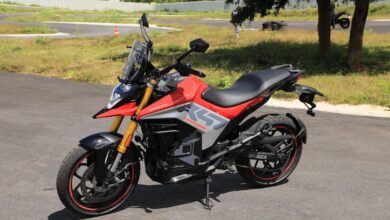Financial Inclusion Is a Myth: How Gluwa Makes Nigeria’s Borderless Finance a Reality

Financial Inclusion Is a Myth: How Gluwa Makes Nigeria’s Borderless Finance a Reality
Estimated Reading Time: 7-8 minutes
- Traditional financial inclusion often provides only superficial access (e.g., digital wallets) without deeper credit pathways or economic mobility.
- Gluwa addresses this by building a decentralised credit infrastructure, using Creditcoin for immutable transaction records and Credal API for seamless lender integration.
- Its system enables portable credit histories, facilitates cross-border capital flows, and uses stablecoins with fiat gateways for practical utility.
- Gluwa strategically partners with institutions like the Central Bank of Nigeria for eNaira integration and leverages robust cloud infrastructure (Microsoft Azure) for reliability.
- The platform has a proven impact, exemplified by partnerships with Aella and potential future projects in Liberia, demonstrating tangible steps towards genuine financial empowerment.
- The Illusion of Financial Inclusion: Why a Wallet Isn’t Enough
- Gluwa’s Blueprint for True Inclusion: Decentralised Credit Infrastructure
- Overcoming Barriers: How Gluwa Delivers Real Financial Access
- The Strategic Foundation: Cloud + Blockchain Synergy
- Take Action Towards True Financial Inclusion
- Final Thoughts
- Frequently Asked Questions
The promise of financial inclusion resonates deeply across developing economies, offering hope to billions currently excluded from formal financial systems. Yet, for many, this promise remains largely unfulfilled. We often toss around terms like financial inclusion, banking the unbanked, and borderless finance with the confidence of a slogan, but the reality is messy. In many countries, inclusion is more of a checkbox than a reality.
“Inclusion in finance is often treated as a moral goal, but in practice, it is more of a marketing slogan. Real inclusion means giving the unbanked and underserved tools, systems, and credit pathways, not just handing them a digital wallet.”
This critical distinction highlights a fundamental flaw in many existing approaches. While providing a digital wallet might seem like progress, it often leaves users without the deeper financial infrastructure needed to truly uplift their economic standing. This is where Gluwa steps in, challenging the superficial narrative and building the foundational infrastructure for genuine financial empowerment.
The Illusion of Financial Inclusion: Why a Wallet Isn’t Enough
Picture this: an individual in a remote village receives a new mobile money account or a digital wallet. On the surface, they are now “included.” However, dig a little deeper, and the limitations become stark. People given a bank or mobile money account often still have no path to credit, insurance, or investment. Even with digital wallets, many remain locked out of value on-ramps, credit scoring, formal capital, or cross-border access. The systems designed to support them are fragmented, siloed by country/region, heavily regulated, and underbuilt.
Consider the core challenges:
- Lack of Credit Pathways: A wallet without a mechanism to build credit is merely a payment tool, not a gateway to economic mobility.
- Fragmented Systems: Financial data and services are often confined within national borders, making cross-border transactions and credit assessments nearly impossible.
- Regulatory Hurdles: Strict and often outdated regulations stifle innovation and make it difficult for new solutions to emerge.
- Trust Deficit: Trust is a major barrier: how do you assess credit risk where no records exist or where data is unreliable? Without verifiable financial history, lenders are hesitant, creating a vicious cycle of exclusion.
In effect, financial inclusion is a myth when it means digitally handing someone an account, but not giving them upward mobility. True inclusion demands portability, interoperability, transparency, and trust. And this is why Gluwa is enabling it.
Gluwa’s Blueprint for True Inclusion: Decentralised Credit Infrastructure
Gluwa is already playing a crucial role in facilitating global financial inclusion, positioning itself as more than just another fintech or wallet. Gluwa is a decentralised credit infrastructure provider and borderless financial rails builder. Instead of trying to create a new “bank for the unbanked” like many existing platforms, Gluwa builds the plumbing so that existing and new lending institutions can plug in, issue loans, record activity, and let borrowers build real credit.
At Gluwa’s core are two symbiotic components:
- Creditcoin: This is Gluwa’s own blockchain, purpose-built for recording lending and repayment events in a transparent and immutable way. It serves as the single source of truth for financial interactions.
- Credal: This is the API infrastructure layer (blockchain-as-a-Service) that enables fintechs and microfinance institution lenders to record loan activity, credit histories, identity, and reputational data to this shared ledger. Credal abstracts away the complexity of blockchain, allowing traditional lenders to integrate seamlessly.
Gluwa’s architecture intelligently connects global capital investors to local lending institutions, allowing funds to flow across borders more seamlessly than traditional intermediaries permit. It is also integrated with a scalable cloud infrastructure to support its blockchain and backend services reliably, ensuring stability and performance.
Overcoming Barriers: How Gluwa Delivers Real Financial Access
Gluwa’s innovative approach tackles the fundamental barriers to financial inclusion head-on:
Portable, Verifiable Credit Histories
The Gluwa ledger captures every loan, every repayment, creating an onchain permissioned and transparent record of credit behaviour. Over time, this becomes a portable credit history, usable by various lenders worldwide. Because the record is immutable and transparent, lenders don’t have to rely on unverifiable traditional reports or local, opaque systems. This systematic approach effectively builds trust by design, empowering individuals with a credible financial identity that transcends geographical boundaries.
Cross-Border Capital Flows and Risk Diversification
One of Gluwa’s core innovations is letting capital flow from places with surplus investment into regions with capital scarcity, while preserving risk control via transparent data. That means an investor in New York, Seoul, or Singapore can participate in funding loans in Nigeria, India, or Southeast Asia. Gluwa acts as the interface, routing capital through local partners, with risk visible onchain. This is far harder with conventional systems, due to currency risk, regulatory walls, correspondent banking constraints, and lack of trusted reporting.
Stablecoin-Based Lending + Fiat Gateway
To guard against the notorious volatility of cryptocurrencies, loans on Gluwa are denominated in stablecoin equivalents tied 1:1 to the local fiat currency (such as the Nigerian Naira to cNGN). But users typically still need real, usable cash, especially in cash-based economies. Therefore, Gluwa works with partners to integrate with local payment rails and fiat off-ramps to bring liquidity into the system. This dual system ensures that the magic of blockchain doesn’t trap users in tokens they can’t spend, providing practical utility.
Modular API Infrastructure (Credal) and Easy Integration
The Credal infrastructure abstracts away blockchain complexity, meaning lenders don’t need to be blockchain experts. They can:
- Use REST APIs to issue loans, repay, and query credit events.
- Connect identity, KYC, and underwriting models directly into the ledger.
- Tap cross-chain interoperability abilities to record events on different chains if needed.
- Leverage a developer dashboard with diagnostics and analytics for real-time credit book visibility.
This modularity significantly lowers the barrier to entry for local microfinance institutions, fintechs, and even traditional banks to adopt the Gluwa ledger, accelerating the reach of genuine financial inclusion.
Collaborations with Institutions and CBDCs
One of Gluwa’s boldest moves is working with the Central Bank of Nigeria to boost eNaira adoption by integrating with the Gluwa stack. This collaboration ensures that the eNaira can function as a credit gateway, not just a digital wallet. Instead of eNaira being idle in wallets, it becomes an entry point for microloans, reputational scoring, and credit building in Nigeria’s broader financial ecosystem. This bridges public digital currency with private credit innovation. Gluwa is also in partnerships with countries like Liberia for CBDCs, combining satellite or connectivity improvements with financial inclusion. Institutions like the Central Bank see value in leveraging an existing blockchain backbone rather than reinventing a parallel system. Gluwa has already facilitated over $4.27 million in loan transactions, with every transaction representing a story of someone who might have never had access to credit under legacy systems.
The Strategic Foundation: Cloud + Blockchain Synergy
Gluwa uses Microsoft Azure as its backbone. This choice is strategic because Azure does not compel isolation, allowing for public endpoints that match well with public blockchain models. Gluwa does not treat blockchain as a silver bullet; instead, it marries it with robust cloud infrastructure so the system is stable, available, and maintainable. They leverage containerization, Kubernetes, scalable databases, caching, monitoring, and standard cloud patterns to make the blockchain nodes, APIs, and services resilient, secure, and performant. This layered approach means their blockchain (Creditcoin) is backed by real-world operational engineering, not just a theoretical network, ensuring reliability at scale.
Real-World Impact: Turning the Tide
- Gluwa + Aella: An early partnership with Aella, a prominent credit/fintech platform in Nigeria, demonstrated the power of Gluwa’s infrastructure. Aella saw how blockchain could help track credit, reduce risk, and scale lending effectively. This integration brought over a million Aella users into the Gluwa ledger infrastructure, showcasing immediate and substantial impact.
- CBDC + eNaira: Through Gluwa’s integration, Nigerians who hold eNaira wallets can now be eligible for microloans whose repayment helps build their reputational/credit profile, even if they never had a traditional banking history. This makes the eNaira a dynamic tool for economic growth, far beyond its initial purpose as a digital currency.
- Future Potential in Liberia: Gluwa is currently exploring working with government leaders in Liberia to deploy a comprehensive CBDC system that integrates mobile money, satellite internet, and credit mapping. This highlights Gluwa’s commitment to holistic financial inclusion, addressing infrastructure and access concurrently.
These examples illustrate that Gluwa is not operating in a vacuum; they are actively collaborating with real players, regulators, and countries to make a tangible difference.
Take Action Towards True Financial Inclusion
If you’re interested in being part of the real solution, consider these steps:
- For Fintechs & Lending Institutions: Explore integrating with Gluwa’s Credal API infrastructure. Leverage Creditcoin to build transparent, portable credit histories for your borrowers, unlock new capital sources, and reduce operational risk.
- For Global Investors: Investigate opportunities to deploy capital through Gluwa’s platform into high-growth, underserved markets. Contribute to economic development while gaining visibility and control over your investments via on-chain transparency.
- For Policymakers & Regulators: Engage with Gluwa to understand how its decentralised credit infrastructure can complement national digital currency initiatives (like CBDCs) and strengthen the broader financial ecosystem, fostering genuine economic inclusion for your citizens.
Final Thoughts
Financial inclusion as practiced today is often superficial. To truly redefine inclusion, we need systemic change; new credit rails, open ledgers, interoperable systems, and permissioned transparency. Gluwa is the serious player pushing that boundary. It is pragmatic, grounded in engineering, and already delivering impact. Gluwa challenges the assumption that local systems must remain siloed. If credit histories can be portable and trusted, risk assessment becomes more global and inclusive. The journey to borderless finance and genuine inclusion is complex, but with Gluwa’s robust, decentralised infrastructure, it is steadily becoming a reality.
If you believe inclusion is more than just a wallet, Gluwa’s infrastructure is the clearest bet in the space to get on.
Learn More About Gluwa and Their Mission
Frequently Asked Questions
Why does Gluwa consider traditional financial inclusion a “myth”?
Gluwa views traditional financial inclusion as often superficial because it frequently stops at providing basic tools like digital wallets without offering deeper infrastructure for credit building, investments, or cross-border financial mobility. True inclusion, for Gluwa, requires systemic pathways to upward economic mobility, not just an account.
What are Creditcoin and Credal, and how do they form Gluwa’s core infrastructure?
Creditcoin is Gluwa’s purpose-built blockchain that transparently and immutably records all lending and repayment events, serving as a single source of truth for financial interactions. Credal is the API infrastructure (blockchain-as-a-Service) that allows fintechs and microfinance institutions to easily integrate with Creditcoin, recording loan activity, credit histories, and identity data without needing blockchain expertise.
How does Gluwa facilitate cross-border capital flows and risk management?
Gluwa connects global capital investors with local lending institutions, enabling funds to flow across borders more efficiently than traditional systems. It provides onchain transparency for risk visibility, allowing investors in developed economies to fund loans in underserved markets while maintaining control and insight into the investment’s performance.
How does Gluwa mitigate cryptocurrency volatility in its lending model?
To address crypto volatility, Gluwa denominates loans in stablecoin equivalents that are pegged 1:1 to local fiat currencies (e.g., cNGN for Nigerian Naira). Additionally, it integrates with local payment rails and fiat off-ramps through partners, ensuring that users can easily convert their digital funds into usable cash, providing practical utility without exposure to volatile assets.
What is Gluwa’s role in the adoption of Central Bank Digital Currencies (CBDCs) like Nigeria’s eNaira?
Gluwa is collaborating with the Central Bank of Nigeria to integrate with the eNaira, transforming it from just a digital wallet into a credit gateway. This integration allows eNaira holders to become eligible for microloans, building their reputational and credit profiles. Gluwa is also exploring similar partnerships in countries like Liberia, aiming to combine CBDCs with broader financial inclusion initiatives, including credit mapping and improved connectivity.





